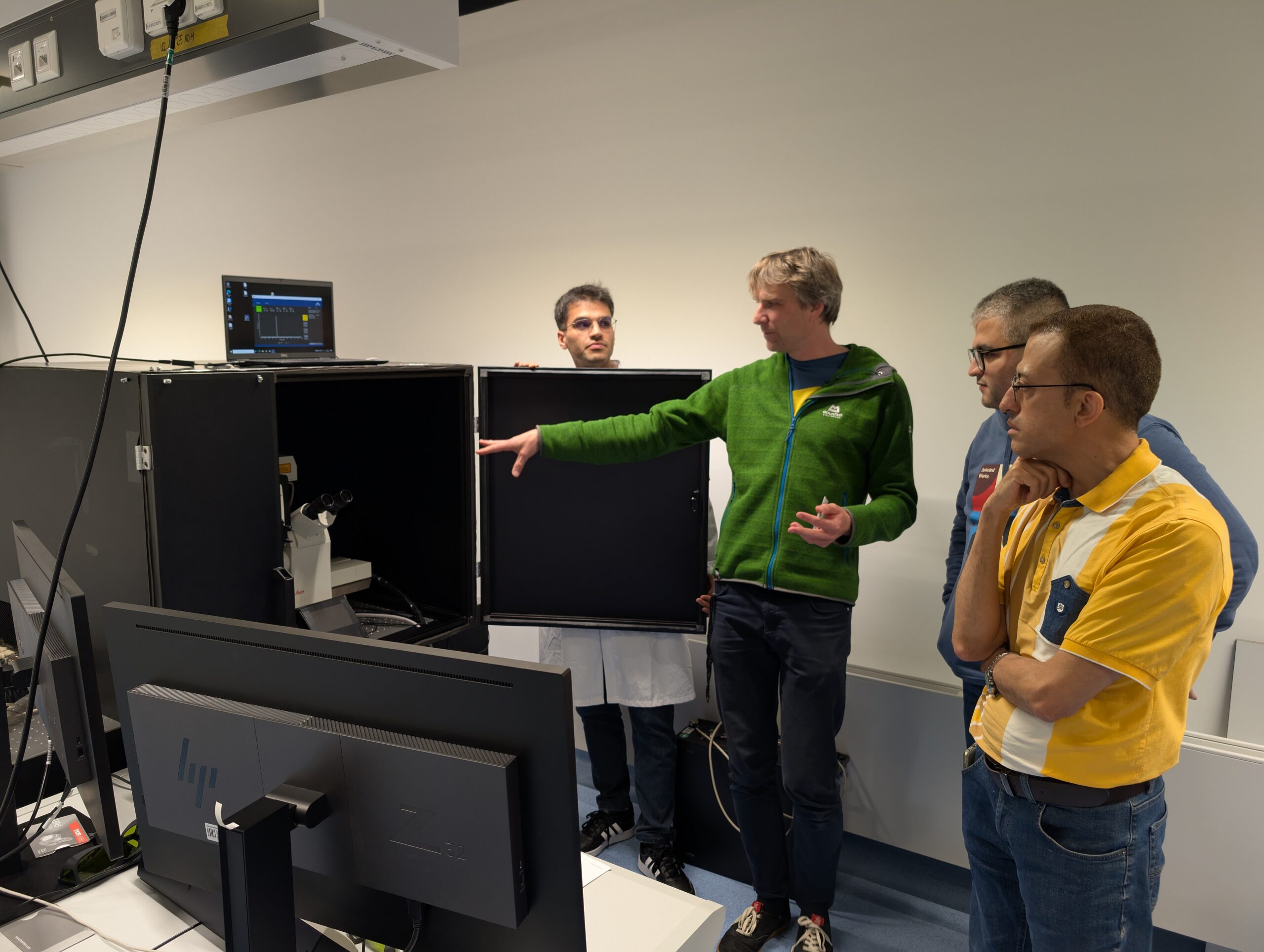
Interdisciplinary Exchange, New Impulses, and Insights into Robotics Research
On September 29, the second Presene JourFixe of our project took place at Jena University Hospital. Researchers and staff from all six participating working groups came together to discuss current developments, challenges, and future perspectives. The in-person meeting provided a valuable opportunity to strengthen existing collaborations and generate new ideas for ongoing and future research activities.
Insights into Robotics at ITK Engineering
To open the event, we were pleased to welcome Mr. Luksch and Mr. Tauro from ITK Engineering. In their presentation, they introduced the company and, in particular, their Robotics Division. The talk offered fascinating insights into the current state of robotic systems in the medical field and highlighted the diverse and powerful applications of modern robotic technologies.
Given our overarching goal of advancing and optimizing robot-assisted surgical procedures, the approaches presented provided valuable inspiration. We would like to express our sincere thanks for their inspiring contribution and look forward to further opportunities for collaboration.
Interdisciplinary Exchange Between Working Groups
The second part of the forum focused on cross-group discussions. In moderated sessions, participants presented current challenges within their subprojects and jointly explored potential solutions. It was particularly rewarding to see how dialogue between different disciplines — from computer science and engineering to clinical application — generated new perspectives and approaches.
This intensive exchange not only strengthens cooperation within the project but also helps to identify and leverage interdisciplinary synergies that drive scientific progress.
New Research Infrastructure at the CeTraMed Building
The meeting took place in the newly opened CeTraMed Building at Jena University Hospital, which now serves as a central hub for scientific collaboration. In addition to the hospital’s research groups, colleagues from the Leibniz Institute and Technische Universität Ilmenau have also established their own laboratories on-site.
As part of the event, participants visited the laboratory of Tobias Meyer-Zedler’s group, where measurements using multimodal nonlinear imaging are now being conducted. This innovative infrastructure enables the analysis of tumor samples immediately after surgery, eliminating delays and long transport routes. It thus creates an important foundation for more precise analyses and faster feedback in clinical research.
Conclusion
The second on-site Annual Forum clearly demonstrated how interdisciplinary collaboration, technological innovation, and scientific exchange jointly advance progress in medical technology research. Through open dialogue among all partners, the forum not only generated new impulses but also strengthened the long-term perspective of the project.
